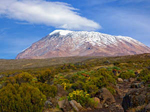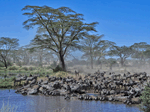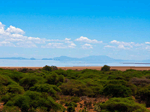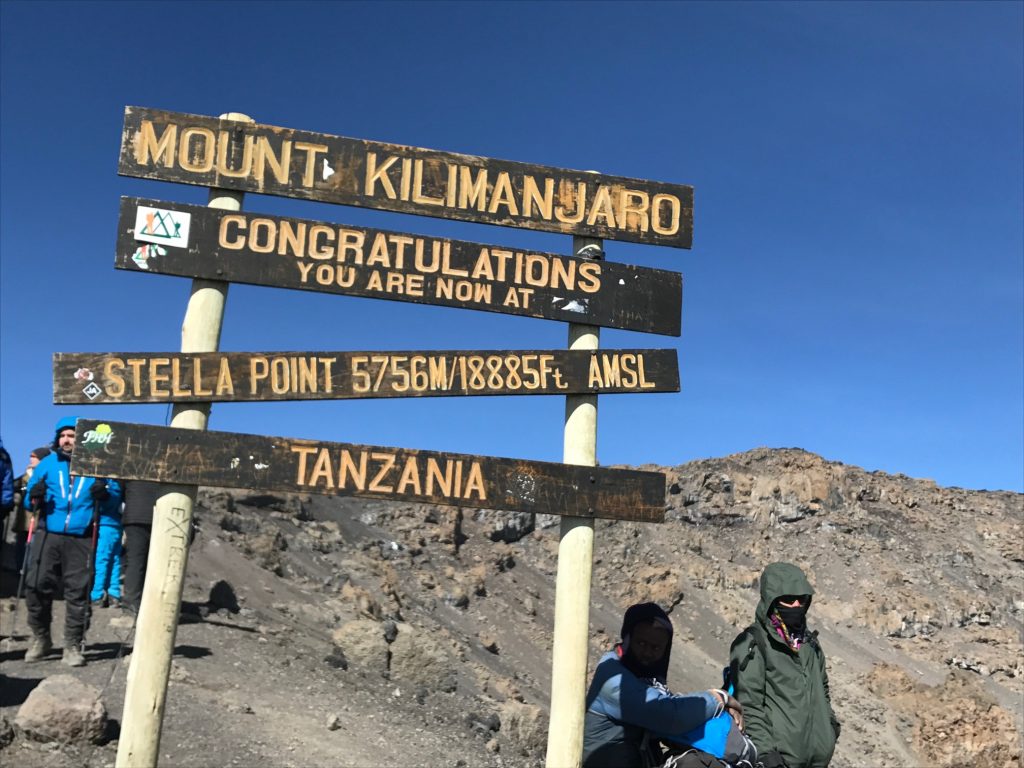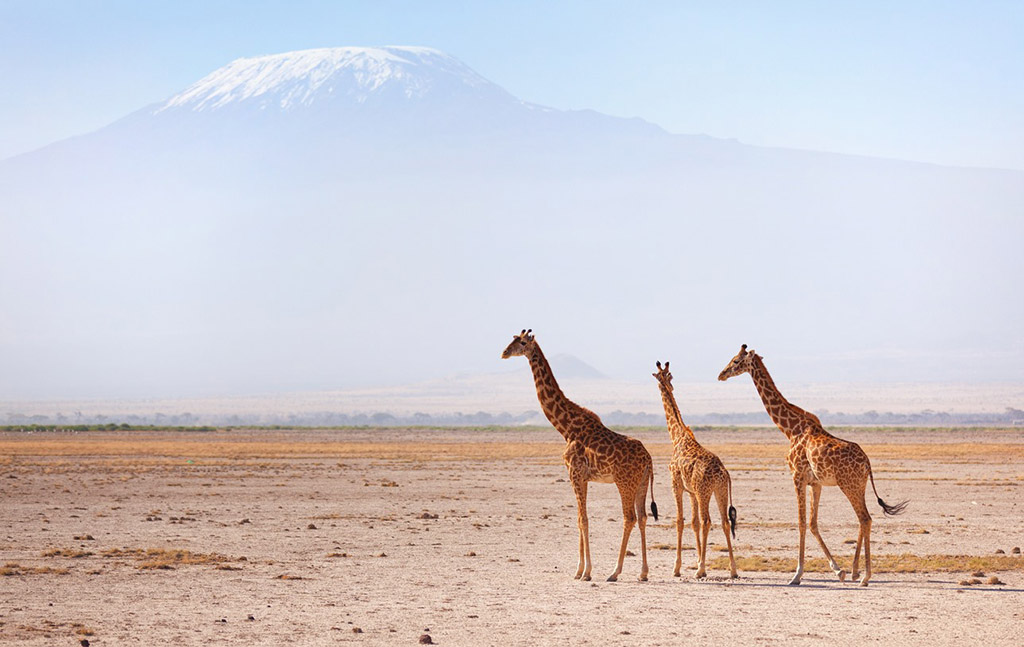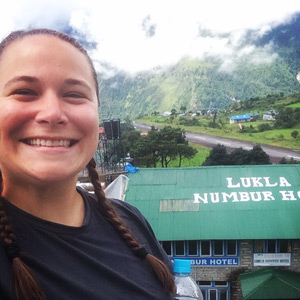
For those of us who are already daydreaming about their next meal, you are probably wondering what quality of food there could be on the trek to Kilimanjaro’s summit. Our Adventure Expert and Kilimanjaro enthusiast Rob Hatch shares this insight “The food is delicious, and is often one of the favorite parts of the trip for our guests. Personally, I found the hot cucumber soup on our way down from the peak to be one of the tastiest and most satisfying meals I’ve ever eaten.” So what other delectable food options are on the trek?
Mostly hot meals will be provided on the climb, some local dishes and others more westernized. They will be freshly prepared over propane camp stoves carried up by the porters. By the time you get to the camp or lunch spot, the meal tent will already have been set up and in traditional Tanzanian style, the group will eat together. Depending on the weather and route you’re on, it’s likely a few boxed lunches will make an appearance. We provide everything, but having some energy bars and some of your favorite snacks from home is a good idea.
Here are some of our standard items for each meal. Kilimanjaro’s foothills are highly fertile and are home to many of the country’s fruit and vegetable farms. We rotate our menu based on seasonally available produce, so this may not be exactly what you get during your climb. Download our typical climbing menu as a pdf.
BREAKFAST: Fruit juice, fresh fruit, cereal/porridge, French-toast/plain-toast/pancakes, sausages, margarine, jam/honey, tea/coffee/drinking chocolate. spinach omelet or fried eggs
SNACKS: Peanuts, crisps, popcorn, cookie.
LUNCH: Sliced carrots and cucumber stripes, avocado slices, boiled eggs, vegetable and meat cutlets, sandwiches (egg/ cheese/tomato/tuna/meat/peanut butter), fresh fruit, salami sandwich, cheese, French toast, macaroni and meat sauce,
DINNER: fresh soup of the day, bread, salad, rice, pasta, potatoes, chicken or beef, mixed vegetables lentils, fruit salad, tea/coffee/milo/drinking chocolate, spaghetti with meat sauce or fish with rice, fried beef with roast potatoes, rice, carrots, cabbage. roast chicken with vegetables, fried rice, green pepper, carrots.
ON WAY TO THE SUMMIT (midnight snack): Hot chocolate, tea, or coffee and biscuits, orange squash, or soup
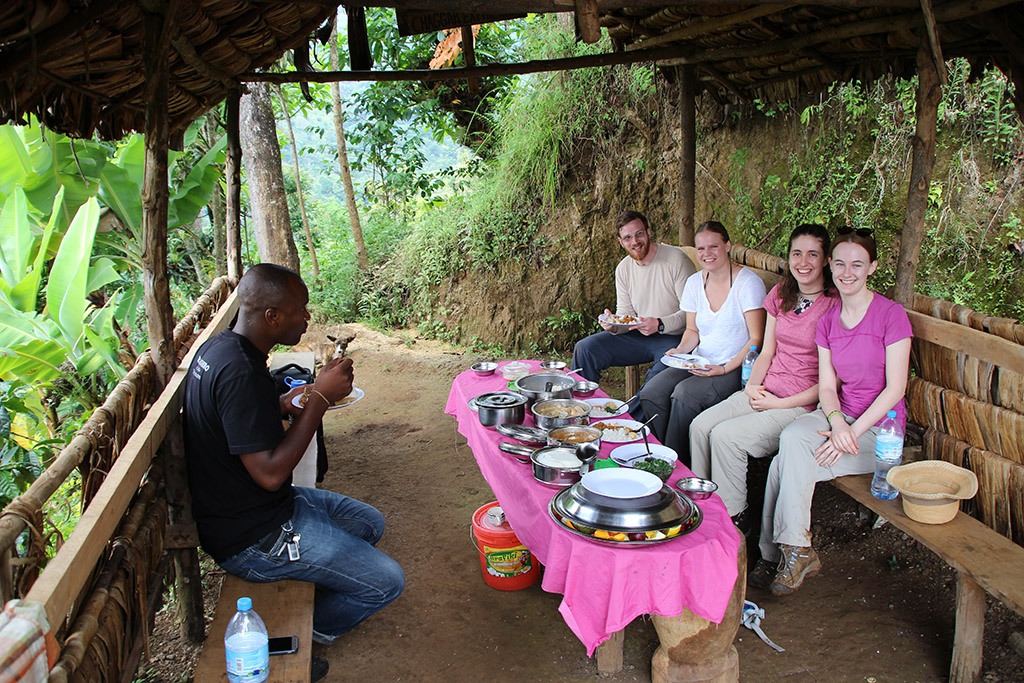
Special Dietary Requirements?
There are a wide variety of food options on the mountain. We are happy to cater to specific requests or suggestions depending on what’s locally available and fresh. If you do have special requests let us know by email before your climb and go over the menu with your guide once you arrive to make sure everything is in order. With notice given at our pre-climb briefing, vegetarian, vegan, gluten free, or specific allergies can all be accommodated by our talented chefs.
Talking Snacks
As our menu shows, we will provide you with 3 filling meals each day, as well as light snacks and popcorn in between meals. However, a little chocolate or trail mix from home can go a long way after a few days of hiking. If you aren’t planning to bring snacks from home, candy bars or dried fruit can be found in Moshi. But it is best to bring your favorite or more specific snacks from home. Keep in mind that the last push on summit night takes a lot of energy and an energy bar or bag of trail mix set aside could be a lifesaver!

Drinking Water
Drink as much water as you can during the climb. Your guides will fill your bottles every morning and evening, and often at lunch. If you’re running low on water while on the trail please let your guide know and they will help you get your bottles refilled. The water is freshly boiled stream water and is safe to drink without treatment. If you want to add some purification tablets that’s fine, but not necessary. We recommend at least 4 liters of water per day, or 5 if you will be using diamox to help with the acclimatization.
Many of our guests bring energy or hydration mixes to add to their water bottles. These are great, but are not available locally, so please plan ahead if this is something you want to use during your climb.
After The Climb!
When trying out the great local food and drink after your climb, consider Tanzania’s locally grown coffee and fruit straight off the slopes of Kilimanjaro. To fill your belly, indulge yourself with some of the Chaaga tribe’s sweet barbeque (nyama choma) or their savory banana stews (machalari). To quench your thirst, try Tangawizi (a local ginger ale), mbege (banana beer), or any other of Tanzania’s skillfully brewed beers. Just remember to cheers by saying “afya!” – (to your) health! Don’t worry our guides will gladly help you with this pronunciation or in finding some of their favorites, just ask! With so many kizuri (delicious) local options around the mountain to choose from, make sure not to go home without trying a few.
What’s Tasty Tanzania?
As local specialties do vary by tribe, it would be impossible to experience all the tastes of Tanzania without traveling through a fair amount of the country. However, this wouldn’t be a true blog on the flavors of TZ without mentioning a few of the country’s universal table manners and food staples. At meals, Tanzanians gather in a communal circle on the ground and eat using their right hands (not left). To refuse food is a taboo, so at least try a little when offered to show respect.
To finish all the food on your plate worries the host that they did not provide enough, so leave a little to show you are satisfied and full. You will likely encounter Ugali, the main staple and national dish. Likened to mash potatoes, this starch is rolled into a ball and dipped into various sauces of meat, fish, or vegetables. Coffee and chai are the most country’s popular drinks. However, if you choose to drink water instead make sure it’s bottled, boiled or purified with tablets.
Special Mention: Zanzibar
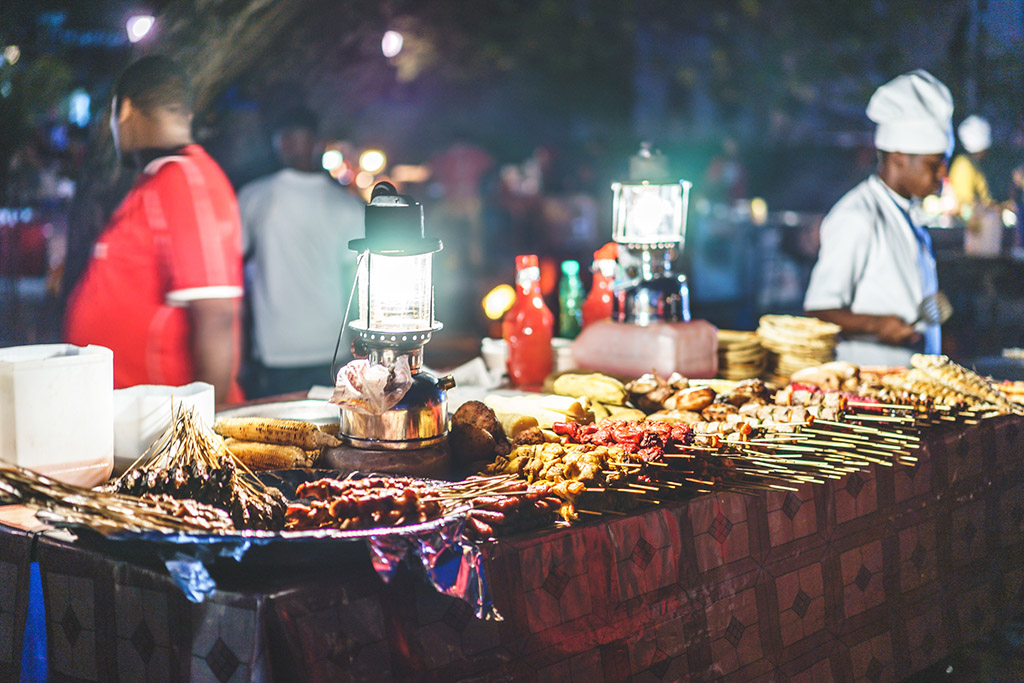
When researching Tanzania’s cuisine its famous “Spice” Island, Zanzibar, is bound to come up. As its nickname suggests, there is a plethora of fruit, herbs, and spices grown on the island that is integrated into the local dishes. Cinnamon, cloves, vanilla, nutmeg, jackfruit and lemongrass all have their place in Zanzibar’s many flavorful dishes. Do as the locals do and help yourself to some delicious coconuts and mangoes, eaten plain or cooked into traditional dishes over an open fire. At the night markets, there is a great selection of seafood options, such as lobster or spicy octopus curry. Additionally, make sure to land yourself a ‘Zanzibar pizza’, a sweet or savory fried pocket that is only served on this island!
Special Thanks To Our Adventure Consultant Rob Hatch and Local Tanzanian Guide Side Fole
